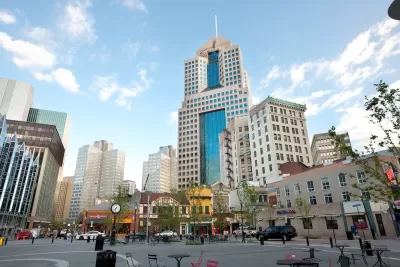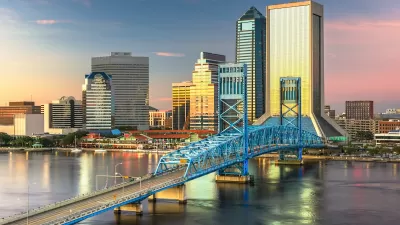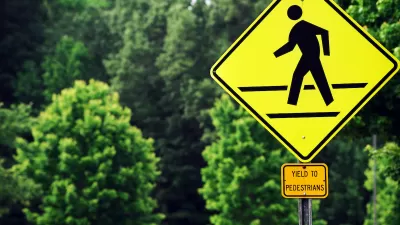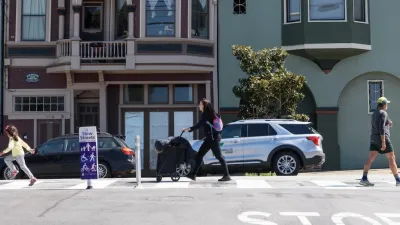The city reduced pedestrian deaths to seven in 2023.

In a piece for Pittsburgh CityPaper, Colin Williams describes how a multi-pronged effort by city agencies and road safety advocates has helped Pittsburgh lower its pedestrian death rate and inch closer to Vision Zero.
“Similar to other civic issues, Vision Zero requires collaboration among agencies that don’t always share the same priorities or systems, including the city government and the relatively new Department of Mobility and Infrastructure (or DOMI, created in 2017); advocacy groups like BikePGH and Pittsburghers for Public Transit (PFPT); PennDOT; and the Pittsburgh Bureau of Police,” Williams writes. For example, roughly half of the 10 percent of roadways where the vast majority of deaths and major injuries occur are managed by PennDOT.
Williams outlines the various tools and databases that PennDOT and local agencies use to aggregate crash data and understand where the most incidents occur and what safety interventions have the biggest impact. “As the city moves ahead with a proposed red-light camera program, many such interventions have gone in, including the two-way conversion of the former Penn Circle, traffic calming along streets such as Stanton Ave. and Grandview Ave., and pedestrian safety installations in Central Lawrenceville. The city continues to install leading pedestrian interval signals at crosswalks that give walkers and rollers a headstart on motorists.”
FULL STORY: Ending pedestrian deaths in Pittsburgh is a team effort

Study: Maui’s Plan to Convert Vacation Rentals to Long-Term Housing Could Cause Nearly $1 Billion Economic Loss
The plan would reduce visitor accommodation by 25,% resulting in 1,900 jobs lost.

North Texas Transit Leaders Tout Benefits of TOD for Growing Region
At a summit focused on transit-oriented development, policymakers discussed how North Texas’ expanded light rail system can serve as a tool for economic growth.

Using Old Oil and Gas Wells for Green Energy Storage
Penn State researchers have found that repurposing abandoned oil and gas wells for geothermal-assisted compressed-air energy storage can boost efficiency, reduce environmental risks, and support clean energy and job transitions.

Private Donations Propel Early Restoration of Palisades Playground
Los Angeles has secured over $1.3 million in private funding to restore the Pacific Palisades playground months ahead of schedule, creating a modern, accessible space that supports community healing after recent wildfires.

From Blight to Benefit: Early Results From California’s Equitable Cleanup Program
The Equitable Community Revitalization Grant (ECRG) program is reshaping brownfield redevelopment by prioritizing projects in low-income and environmental justice communities, emphasizing equity, transparency, and community benefits.

Planting Relief: Tackling Las Vegas Heat One Tree at a Time
Nevada Plants, a Las Vegas-based nonprofit, is combating the city’s extreme urban heat by giving away trees to residents in underserved neighborhoods, promoting shade, sustainability, and community health.
Urban Design for Planners 1: Software Tools
This six-course series explores essential urban design concepts using open source software and equips planners with the tools they need to participate fully in the urban design process.
Planning for Universal Design
Learn the tools for implementing Universal Design in planning regulations.
Ascent Environmental
Borough of Carlisle
Institute for Housing and Urban Development Studies (IHS)
City of Grandview
Harvard GSD Executive Education
Toledo-Lucas County Plan Commissions
Salt Lake City
NYU Wagner Graduate School of Public Service





























